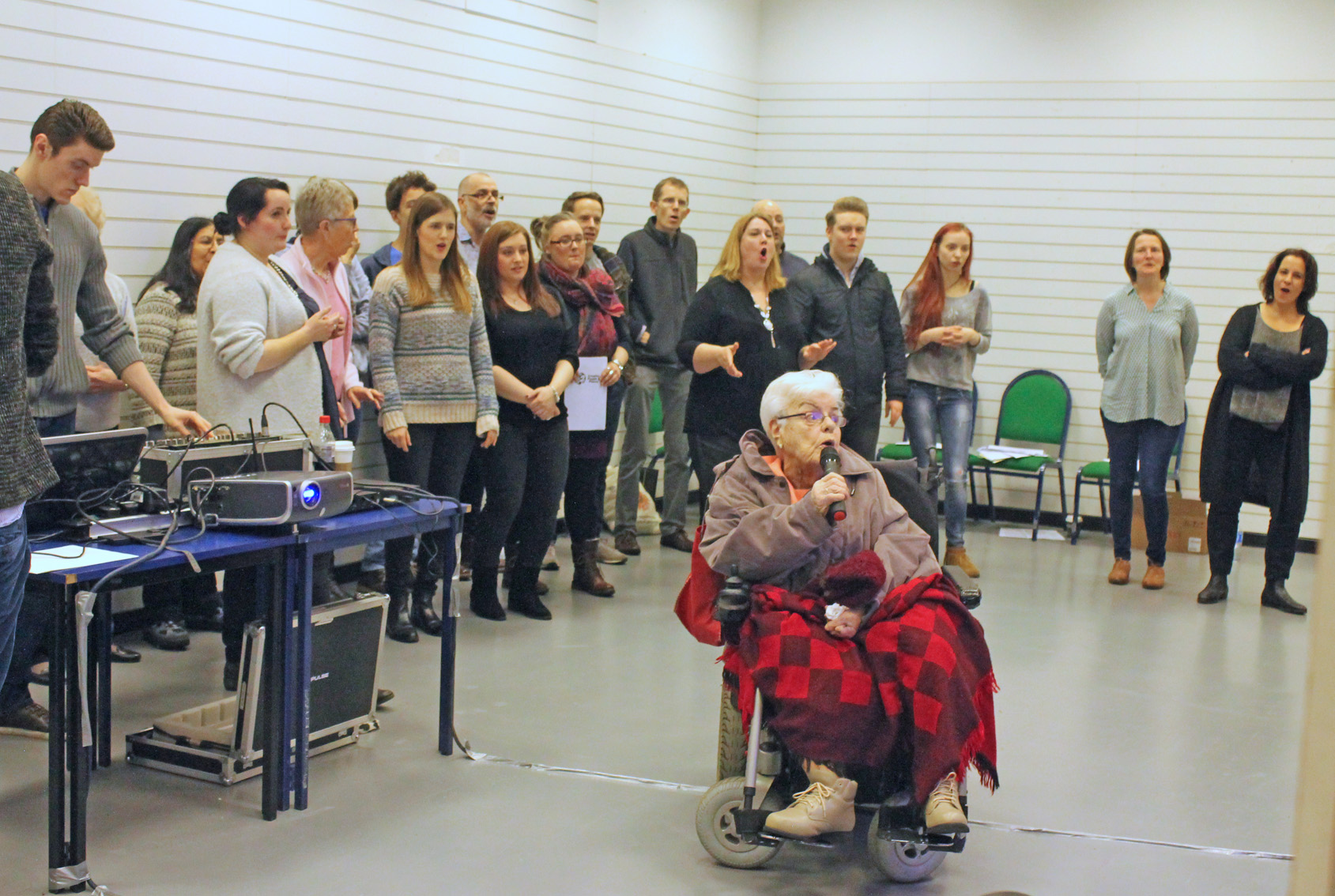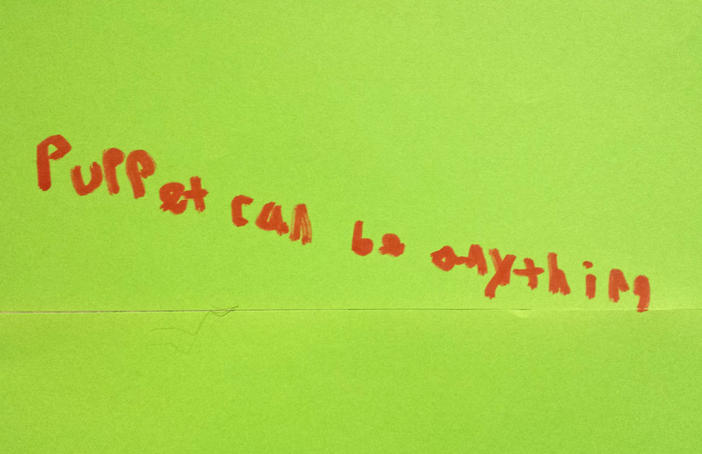MORE THAN A HUNDRED STORIES
More Than 100 Stories is a commission led by artists Sarah Butler and Nicole Mollet that explores and creatively maps the Creative People and Places programme.
Puppets can be anything
Nicole Mollett visits the Hounslow CPP project and reflects on her experience.

The debate around who and what receives funding will always cause tensions and disagreement. The north/south divide has drawn a lot of attention recently, and Arts Council are now doing their bit to readdress the balance. Hence the Creative People and Places (CPP) projects, which aim to target the areas of the lowest arts engagement in the country. So I was quite surprised when I realise that three of the 21 CPP projects are based in or close to London (Hounslow, Barking and Dagenham and Slough). Surely there are enough opportunities to engage with the arts for all communities within the capital? It would appear not. London is a big place, and as with all big things, they often cast shadows.
The Hounslow CPP project is within its first year of establishing itself. I am in contact with Keiko who together with Jan from Waterman’s Arts centre are leading the project. They have a team of three arts workers working together with the community advisory groups to shape their programme. Hounslow sits on the outer western edge of London, below the M4 and right under the flight path of Heathrow. Interestingly the wiki page for the borough states the name points to an Anglo-Saxon word meaning ‘The dog’s mound’ or ‘the mound of a man named or nicknamed Hound’. The term ‘underdog’ springs to mind.
The population of Hounslow is estimated to be 244,926, with 46% of people identifying themselves as being Black, Asian or Minority Ethnic origin. Further research tells me that the borough has an above average rate of low-paid jobs: over one in five (22%) are paid below the London living wage. Hounslow borough council states on their website that there are pockets of acute deprivation, being ranked on the Index of Multiple Deprivation (IMD) as 118th (of 326, 1st being most deprived) in England. So although the vast majority of people are in work, they might not necessarily be able to afford to access the kind of culture central London offers to its visitors.
This is my first real visit to Hounslow, although I have passed through it countless times. My vague mental image is of an endless suburbia, peppered with big shops and industrial areas. I have come to see the ‘Get Creative’ activities at Feltham Library. The shopping plaza is not massively different to any number of high streets I have been to, generic brands, and market stalls selling baked goods and colourful kitsch. Today there is a brass band playing. Despite the spitting rain the calm melodies are making people stop, and listen. This first encounter is part of a bigger idea to form a new Brass Band for Hounslow, because that is what the local advisory group have said they want.
Upstairs in the library there is a number of taster workshops, street dance, tapestry, creative writing, drawing and puppetry. Anyone can walk in and have a go. I notice a comment written on the feedback board ; ‘Puppet can be anything’. The freedom in these words are inspiring.

Next we travel to the Hub, a community space in the middle of a poorer residential area. Jan tells me that most people living here don’t often leave the area to go to events elsewhere, many work at the airport or are connected to a local army base. As we get out of the taxi we hear loud drum rhythms, they have a strong visceral effect. The sounds are being made by a room of over 70 children, of all different ages, being taught by two samba teachers. I can clearly see the enjoyment and excitement on all their faces. Making music is empowering.

The workshop pauses for lunch, and everyone eats together. Children oogle a giant cake with the BBC Get Creative logo on it. I can see whole families have come along to spend the day here together. It feels like a party and that the hub is like one big family, bringing the community together. Later there is a tea dance, henna painting and Bollywood dancing workshops. There is something for everyone.
Our final stop is the Treaty shopping centre in the heart of Hounslow. The team have taken over an empty shop and are presenting ‘Choir-oke’ with the newly formed Hounslow Community Choir (a group initiated and supported by CPP). The choir are helping people find the confidence to get up and sing, by singing with them. The idea is that anyone can walk into the space, choose a track, and have the support of 20 backing singers. There is a queue of people waiting to have their go. More or less everyone in the room is joining in. My sense of embarrassment wanes, and I know the words too. I sing. It is instinctual human behavior to join in singing. Some find it easier than others. However on all levels I can see that those that do come away smiling, and feeling better about themselves. A lady in a wheelchair called Mary sings an old jazz number entitled ‘Bye, Bye, Blackbird’. She is totally immersed in her performance. I sense the lyrics have a deeper meaning for her. The audience applauds her as she hands back the microphone. I leave Hounslow with a feeling of Hope; because like everyone else, I want to see the underdog win.
 Sarah Butler
Sarah Butler Nicole Mollett
Nicole MollettFilter by
DATE
- July 2016 (3)
- June 2016 (4)
- May 2016 (3)
- April 2016 (1)
- March 2016 (2)
- February 2016 (2)
- January 2016 (2)
- December 2015 (1)
- November 2015 (2)
- October 2015 (3)
- September 2015 (11)
- August 2015 (4)
- July 2015 (10)
TAGS
- - No value - (14)
- bait (1)
- Batley Festival (1)
- Bentley (1)
- change (1)
- collaboration (2)
- community (2)
- Confidence (4)
- Creative Scene (1)
- cycling (3)
- decision making (1)
- decisionmaking (1)
- Doncaster (1)
- drawing (2)
- East Durham Creates (1)
- engagement (1)
- flying (1)
- Funding (1)
- Glossary (1)
- Granby 4 Streets (1)
- Heart of Glass (3)
- Hull (1)
- In My Place (1)
- landscape (1)
- language (4)
- LeftCoast (2)
- Local (3)
- Manifesto (1)
- Mexborough (1)
- Passion (1)
- People (2)
- postcards (1)
- Process (1)
- quality (1)
- research (1)
- Right Up Your Street (1)
- Ronnie Hughes (1)
- Roots and Wings (1)
- Socially Engaged Art (1)
- Spectacle (1)
- Super Slow Way (2)
- targets (1)
- The Cultural Spring (1)
- Themes (1)
- time (4)
- trust (1)
- visibility (1)







